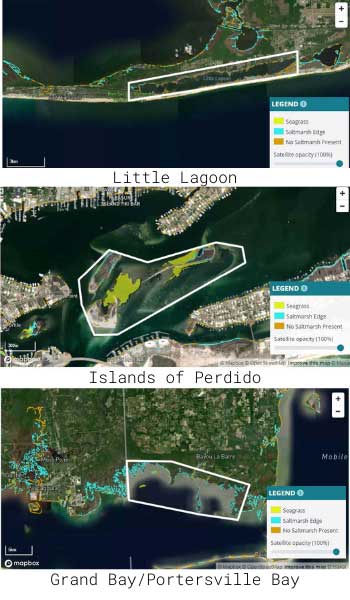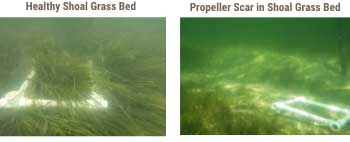(March 03, 2022) --

1. Seagrass beds are nursery habitats for many commercially and recreationally important fish and shellfish, like spotted seatrout and blue crabs. Locally, our seagrass habitats produced as much as 3.3 million additional pounds of recreationally important fish and crabs. To determine this, we used The Nature Conservancy's Fish Production Calculator for salt marsh and seagrass habitats.
Seagrass beds in coastal Alabama include Grand Bay/Portersville Bay, Islands of Perdido and Little Lagoon.
2. Seagrasses are not true grasses. They are more closely related to terrestrial lilies and gingers than grasses. However, seagrass grows rhizomes similar to the grass on your lawn. The rhizomes stabilize the sediments and help keep the water clear by absorbing and storing nutrients.
3. There are about 72 species of seagrass worldwide. Most are found in the Indo-Pacific and Australia. Along the northern Gulf of Mexico, you can find six species of seagrass. These are shoal grass, widgeon grass, turtle grass, manatee grass, paddle grass, and star grass.
4. Coastal habitats worldwide are losing seagrass beds. Recent estimates suggest that loss is 1.5 percent worldwide per year. That amounts to about two football fields per hour.

5. Besides water quality, mechanical damage from human activities is a big threat to seagrass beds. The Dauphin Island Sea Lab is working with state and local partners to restore this valuable habitat. Ways you can help include idling or raising your motor when navigating through our Bays and shallow water estuaries, setting anchors in sandy areas, and obeying "No Motor Zones" or "Sensitive Seagrass Area" signs. Also, check with your local permit office before building a dock or pier.
We recently chatted about seagrasses with Lab Manager Dottie Byron during a February Boardwalk Talk. Check it out below. And if you have any questions, reach out to us at ask@disl.edu.